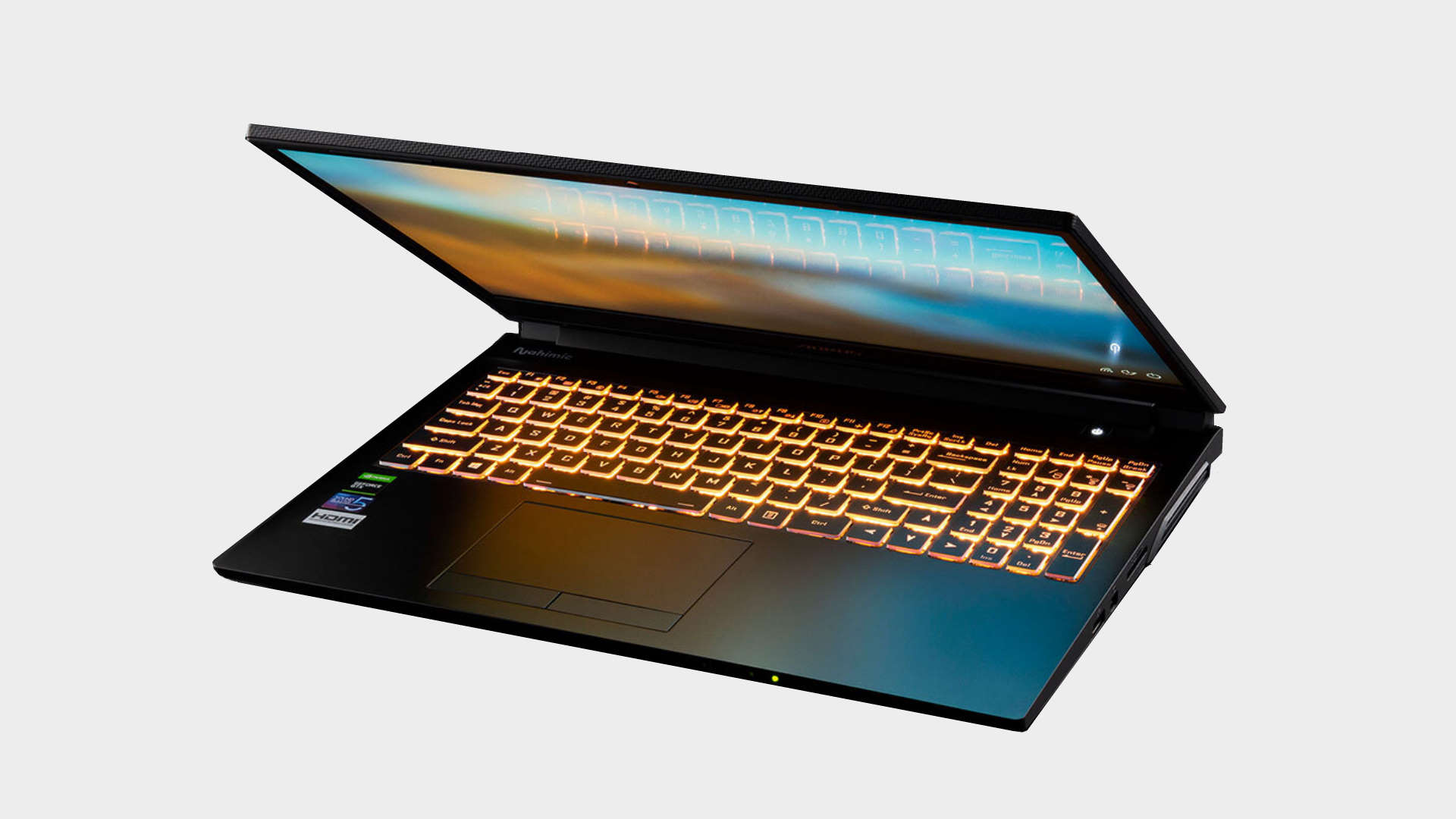Our Verdict
An elegantly dangerous looking machine, with decent performance for the price.
For
- Subtle, sleek design
- Delivers steady performance
- Delightful keyboard
Against
- Not as sturdy as some
- Weak gaming battery life
PC Gamer's got your back
The Gigabyte Aorus 5 comes in three distinct configurations, but the one I've got here is the SB. Perhaps the true glory of this model is the top end 10th gen Intel Core i7 chip, which, when paired with the Nvidia GeForce GTX 1660 Ti (still a very relevant mobile GPU today) makes for a pretty decent machine for the money.
Processor: Intel Core i7-10750H
Graphics: GTX 1660 Ti
Memory: 16GB DDR4
Display: 15.6-inch IPS-level, 144Hz
Resolution: 15.6-inch, 1920 x 1080
Storage: 512GB SSD, 1TB HDD
Battery: 94Wh
Connectivity: 1x USB-A 2.0, 1x Gen2 USB-A 3.2, 1x Gen1 USB-A 3.2, 1 HDMI, 1x Mini Display, 1 Ethernet
OS: Windows 10 Home/Professional 64 Bit
Dimensions: 1.09" x 14.21" x 10.15"
Weight: 4.85lbs
This is especially true for those waiting for the hype around Nvidia's new RTX 3080 cards, and AMD's RX 6800 cards, to die down a bit, before moving into the ray tracing trend—or maybe for those who just couldn't care less about ray tracing and need a performant laptop right now. The Aorus 5 is designed as a desktop replacement for just such people, and though at around $1,400 (£1,399) it manages to deliver where it matters, there are a few downfalls I'll address as we go along.
First impressions were that, while it may not be milled out of solid metal, and the plastic chassis may be cause for concern for some, its still a damn fine looking machine. In fact, it's edgy aesthetic even looks a little dangerous. The design does retain some elegance, though, unlike some of the beefier machines in the Aorus lineup. The Aorus 17X, for example, looks like some kind of sci-fi WMD, whereas the Aorus 5 manages to marry sharp edges and bold graduating lines, into a style that compliments its smaller size, as opposed to going over the top.
It's much thinner and lighter than those 'muscle class' models, too, making it perfect for transporting. And, though it may not be as impressively light as something like the Asus ROG Zephyrus G14, you can still sit it on your lap quite comfortably for a good while without getting a dead leg. You're also unlikely to suffer from sweaty lap, with the Windforce cooling system keeping the components at an impressively steady temp.
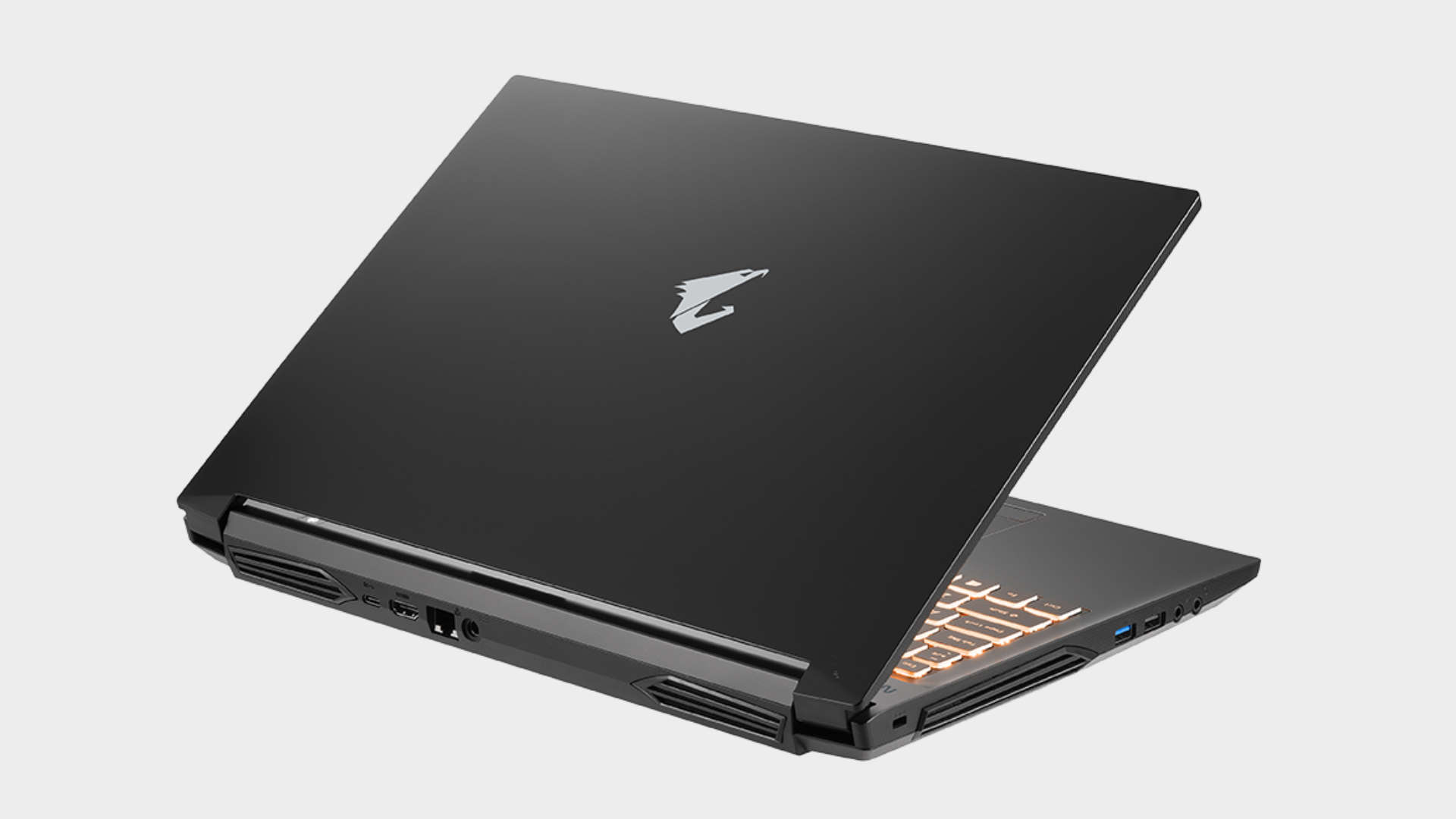
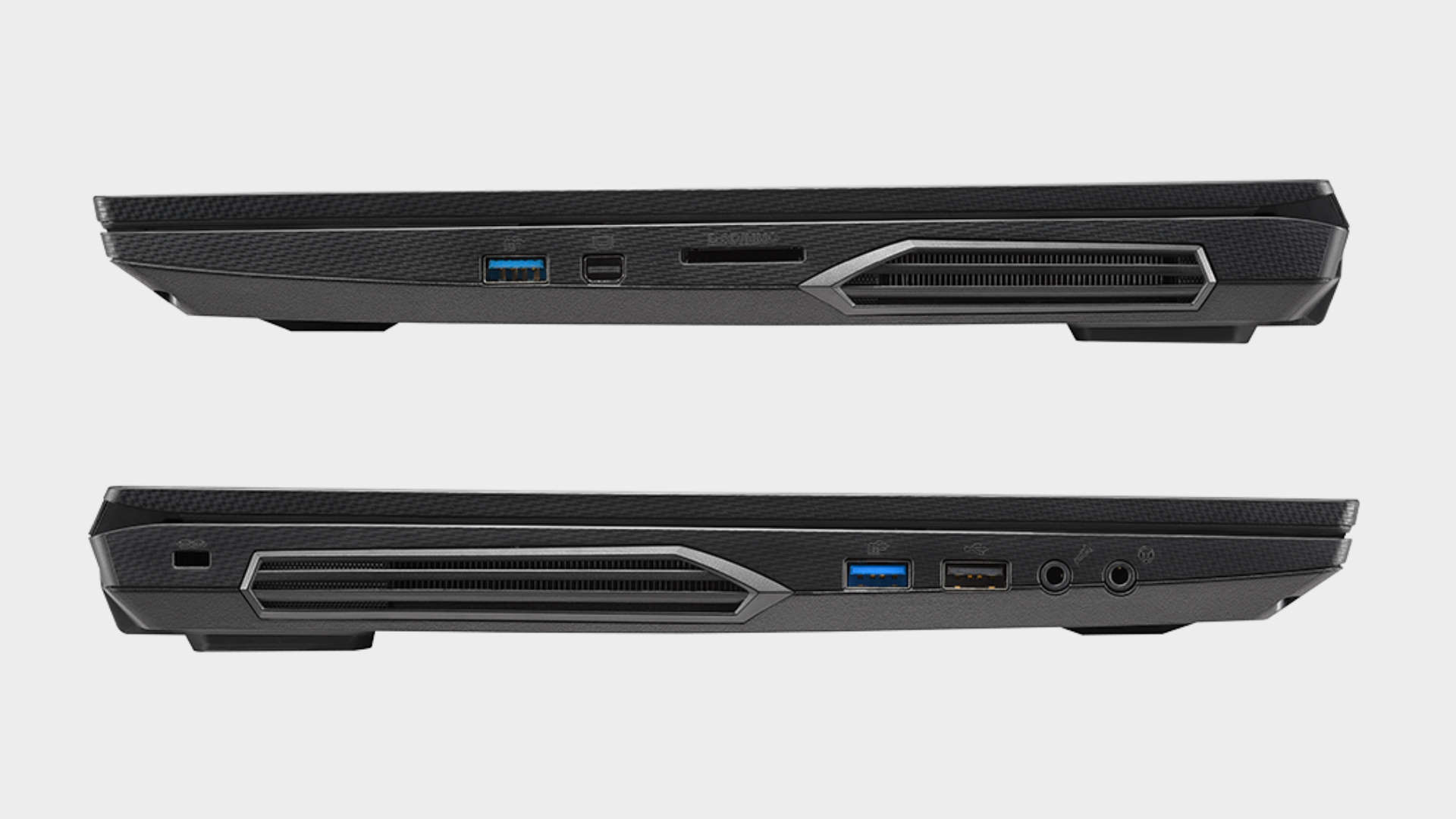
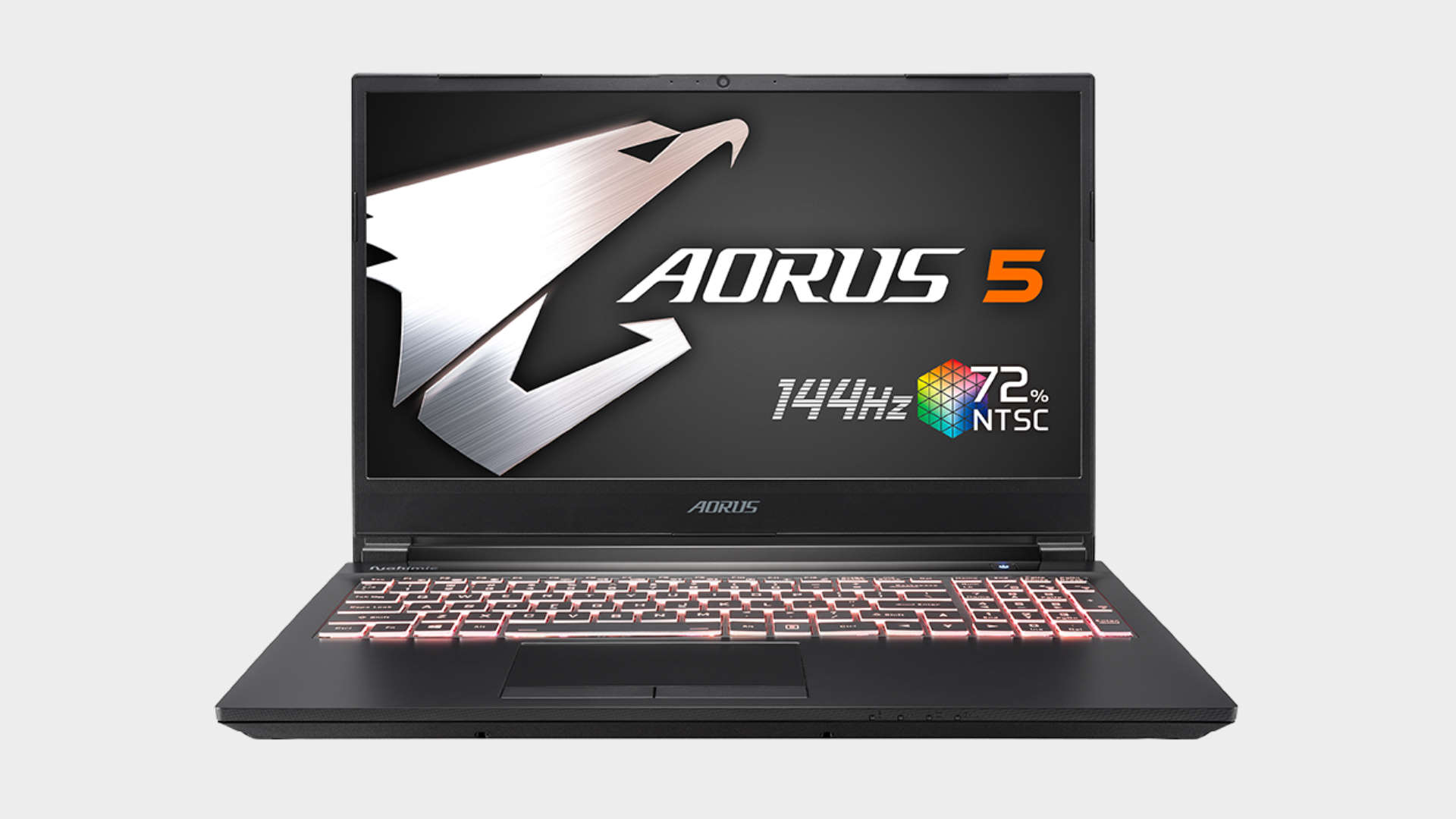
When the thing gets up to speed, it can get a little noisy, but that means the Windforce cooling system is doing its job, mostly. It manages to keep CPU temperatures down to a 91°C maximum (196°F), with GPU temps maxing out at around 76°C (155°F). So, it's not the coolest running machine out there, but it's not going to overheat in a hurry either. Warm air is pushed out through exhausts on either side, too, as opposed to a backward facing exhaust, so if you're using a mouse (as is to be expected with a gaming laptop), you might get a sweaty hand, as opposed to a sweaty lap.
Though I do find it quite agreeable with my bad circulation, especially in winter, but it's not to everyone's taste.
What you're really wondering about, though, is the reason such blustery cooling systems are necessary in the first place: the answer is obviously the components, and their performance. The Aorus 5's GTX 1660 Ti and Intel Core i7-10750H pairing allows it to average at 58 FPS on ultra settings, in a host of graphically intensive games, at 1080p (the panel's native resolution). At mid-high settings it can reach the high 70s, to low 80s, which is more than acceptable.
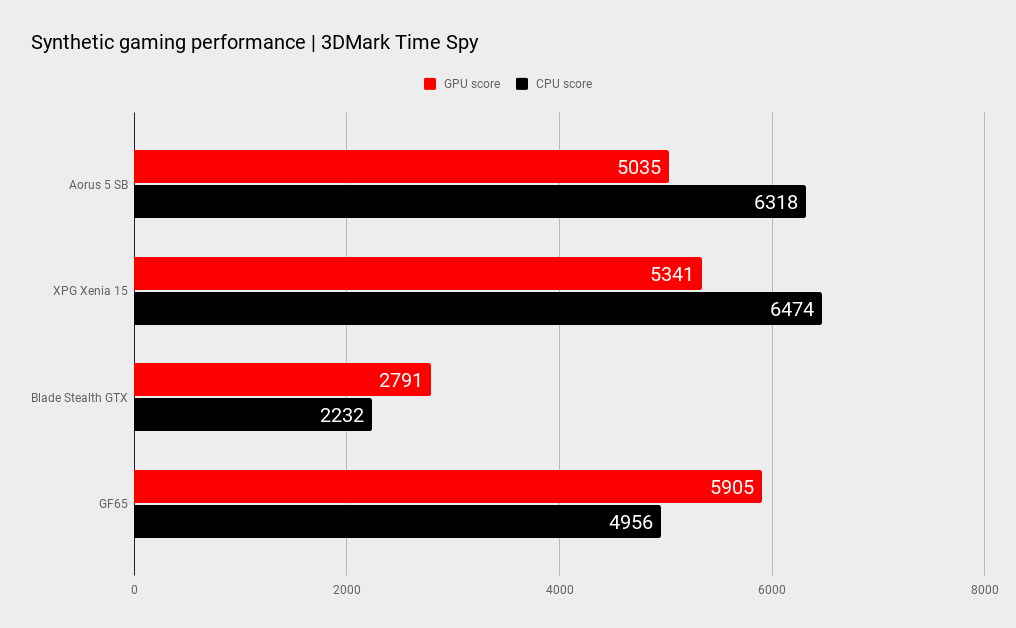

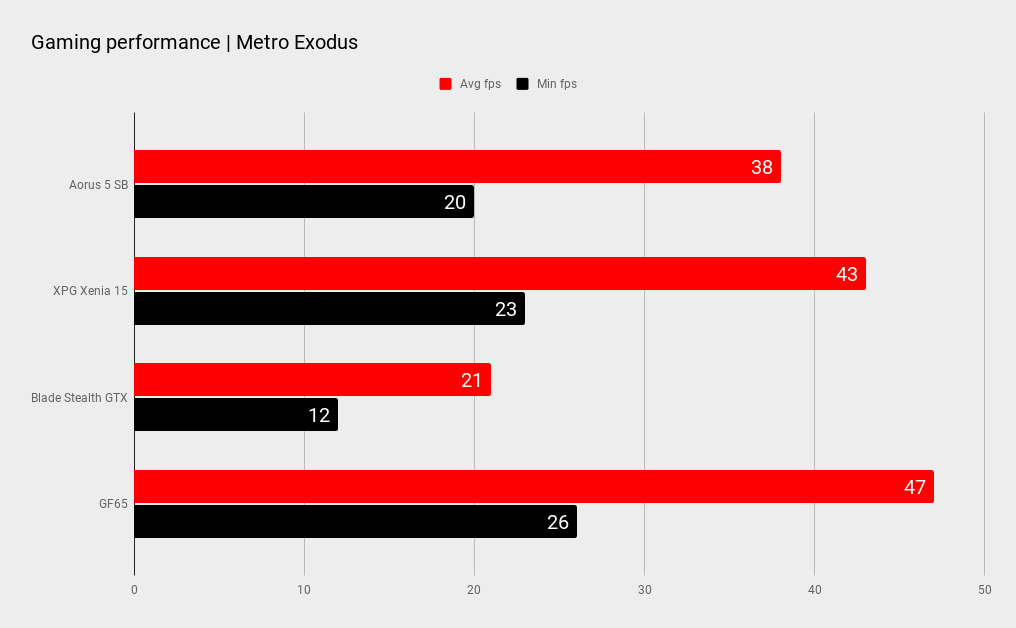
Single core performance is where this machine shines, where it not only rivals some cheaper machines packing low end RTX GPUs, but it sometimes clocks in higher and at lower temperatures. It even beat the more expensive Razer Blade Stealth GTX on a lot of fronts—though admittedly it may not look as pretty.
No, it's not putting out the best performance out there, but the screen puts out an above average 144Hz refresh rate, keeping those frames running smoothly, without a hint of screen tear. Screen bezels on the panel aren't the thinnest, but that also leaves room for a camera on the top edge (where it should be).
Also, unlike some of Gigabyte's more 'extreme' models it doesn't feature a mechanical keyboard, but the full sized, RGB LED-lit chiclet keyboard is beautifully spaced, and an absolute dream to type on. That fact also contributes to being able to carry it comfortably in one hand, and there's more room for all the components, along with other great features.
The Nahimic 3 sound system Gigabyte has packed in there is pretty decent too, with comprehensive software that even features a novel sound tracking system. Compatible with a host of games, it can show a radar on screen to help you visually utilise the surround sound to pinpoint enemies.
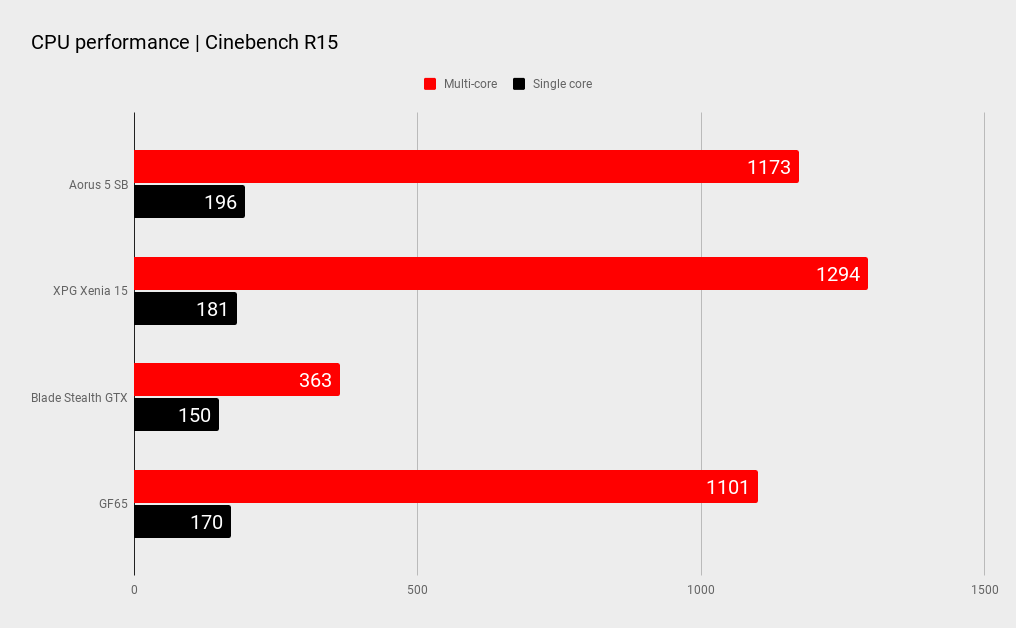

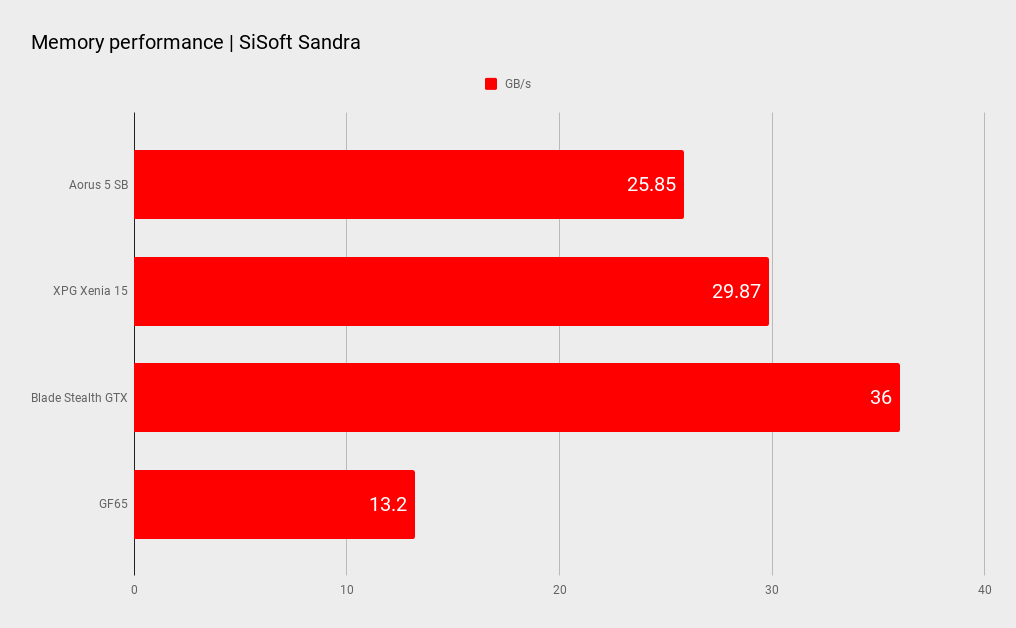
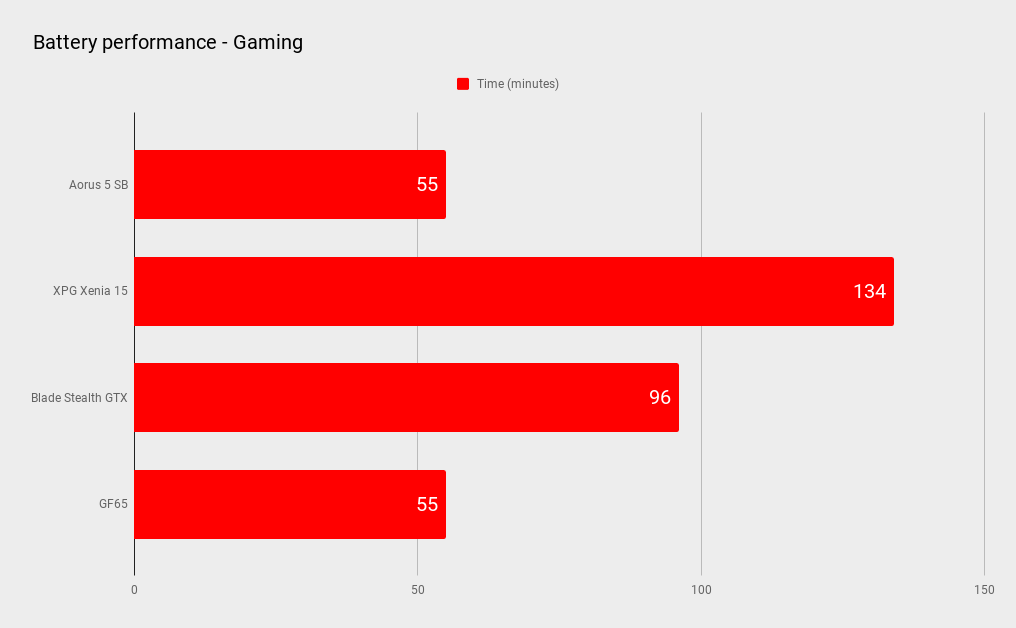
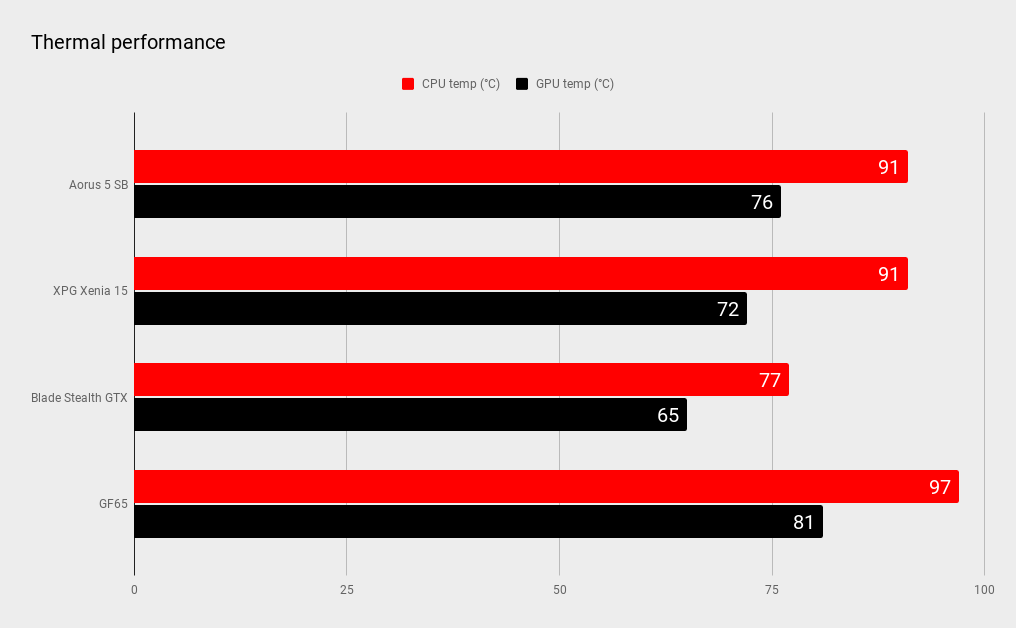
There's also space in there to expand the storage, with 3 storage slots; that includes a spare M.2 slot and another HDD/SSD slot. It'll also support up to 64GB DDR4 RAM at 2,933MHz. So, with the great expandability in this machine, you'd think the battery would be big enough to handle some intense gaming sessions.
Unfortunately battery life is where it really falls short. The Aorus 5 only manages to keep up its performance for around 55 minutes while gaming, so don't leave home without the charger.
Overall, aside from the weak battery life—a common complaint about even the finest gaming laptops—and the somewhat fragile plastic chassis, this configuration makes a beautiful combo. It's packed full of great features, such as the high refresh rate 1080p screen, which works perfectly with the mid-range GTX graphics card. All this bolstered with the beastly Core i7 chip means it's certainly worth the money, particularly if you're one of those who've realised better FPS will always trump excruciatingly high graphics settings. And, for sub $1,400 (£1,399), you could absolutely do a lot worse in terms of components and style.
An elegantly dangerous looking machine, with decent performance for the price.

Screw sports, Katie would rather watch Intel, AMD and Nvidia go at it. Having been obsessed with computers and graphics for three long decades, she took Game Art and Design up to Masters level at uni, and has been rambling about games, tech and science—rather sarcastically—for four years since. She can be found admiring technological advancements, scrambling for scintillating Raspberry Pi projects, preaching cybersecurity awareness, sighing over semiconductors, and gawping at the latest GPU upgrades. Right now she's waiting patiently for her chance to upload her consciousness into the cloud.
